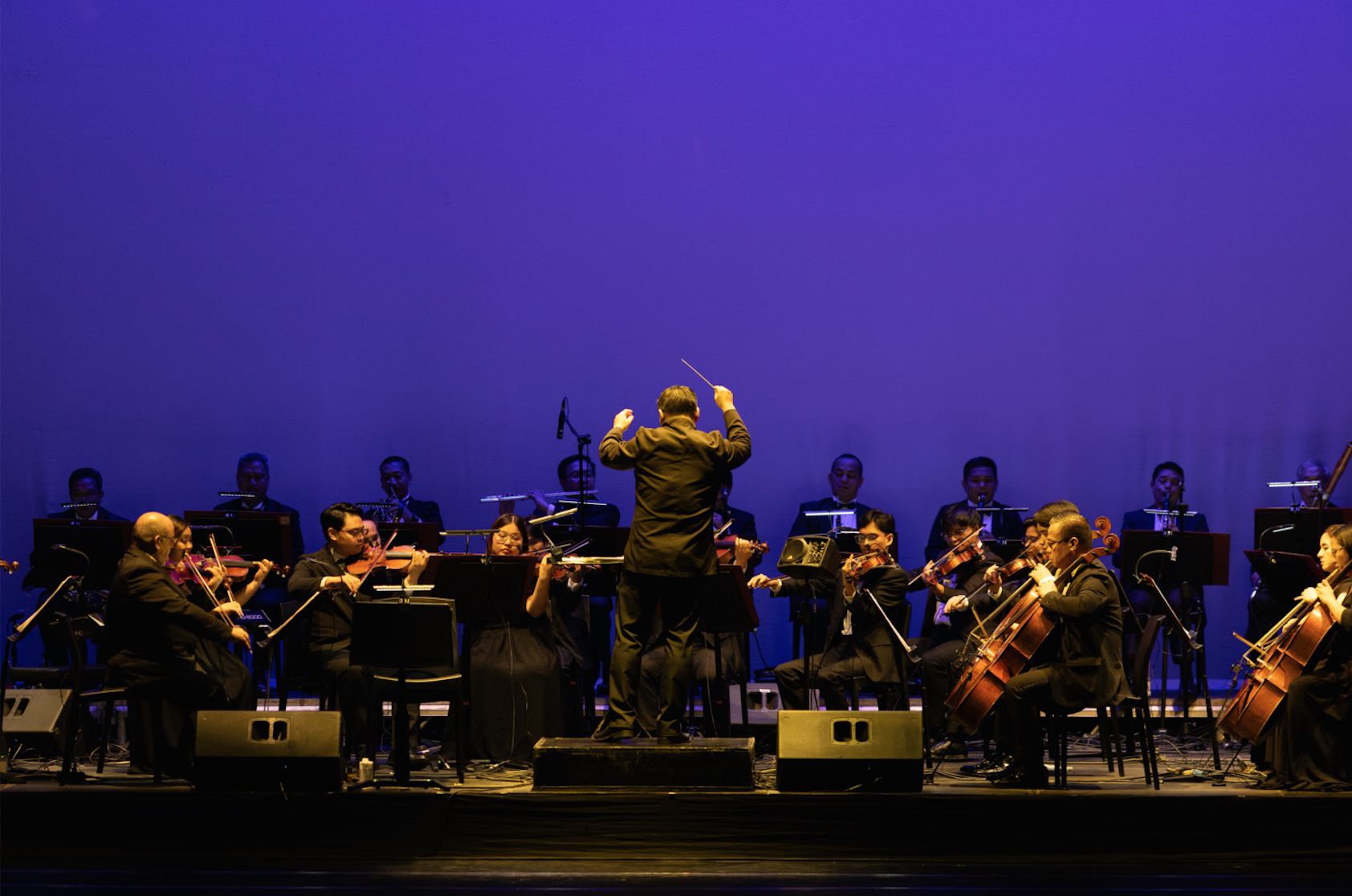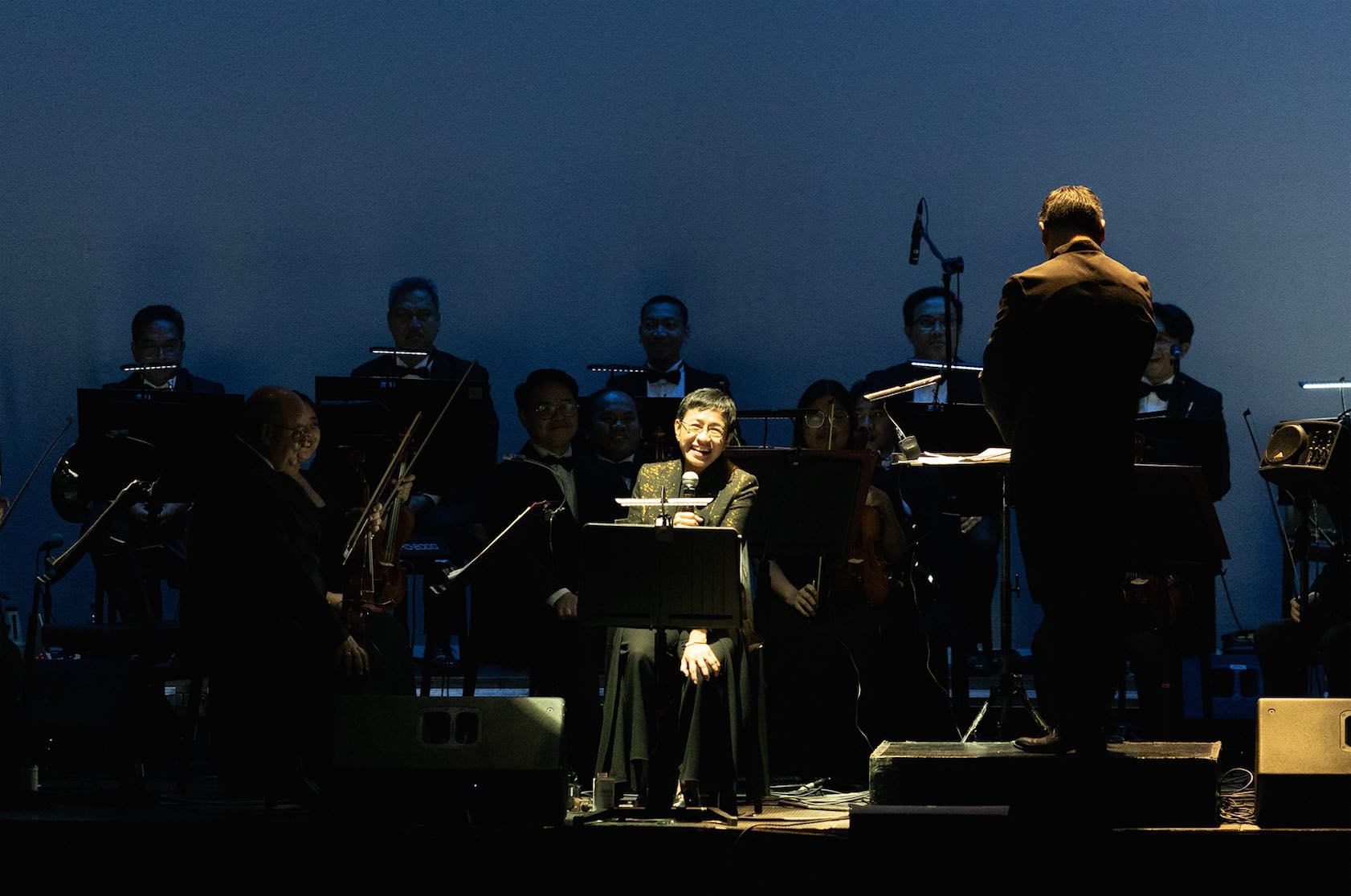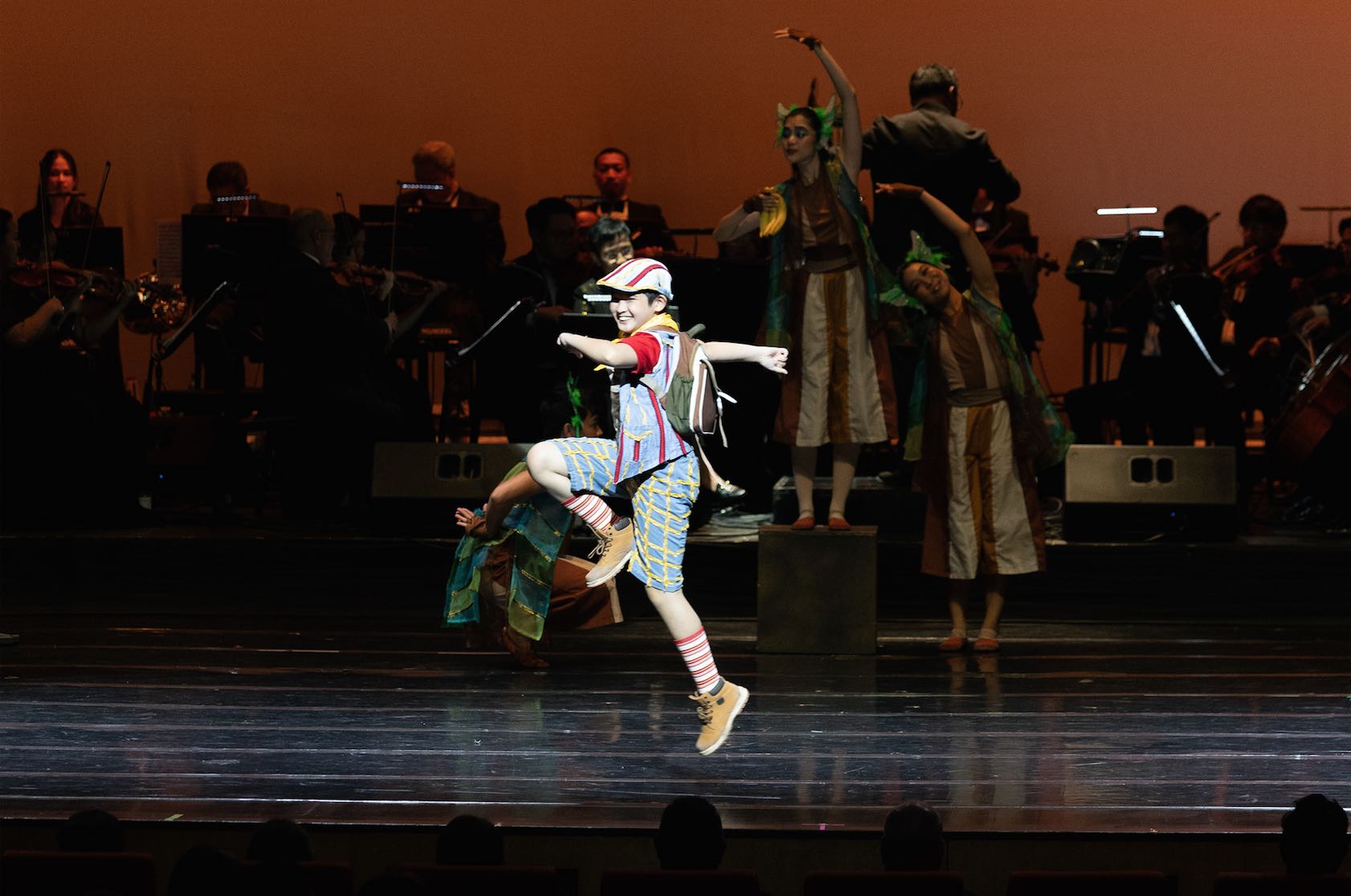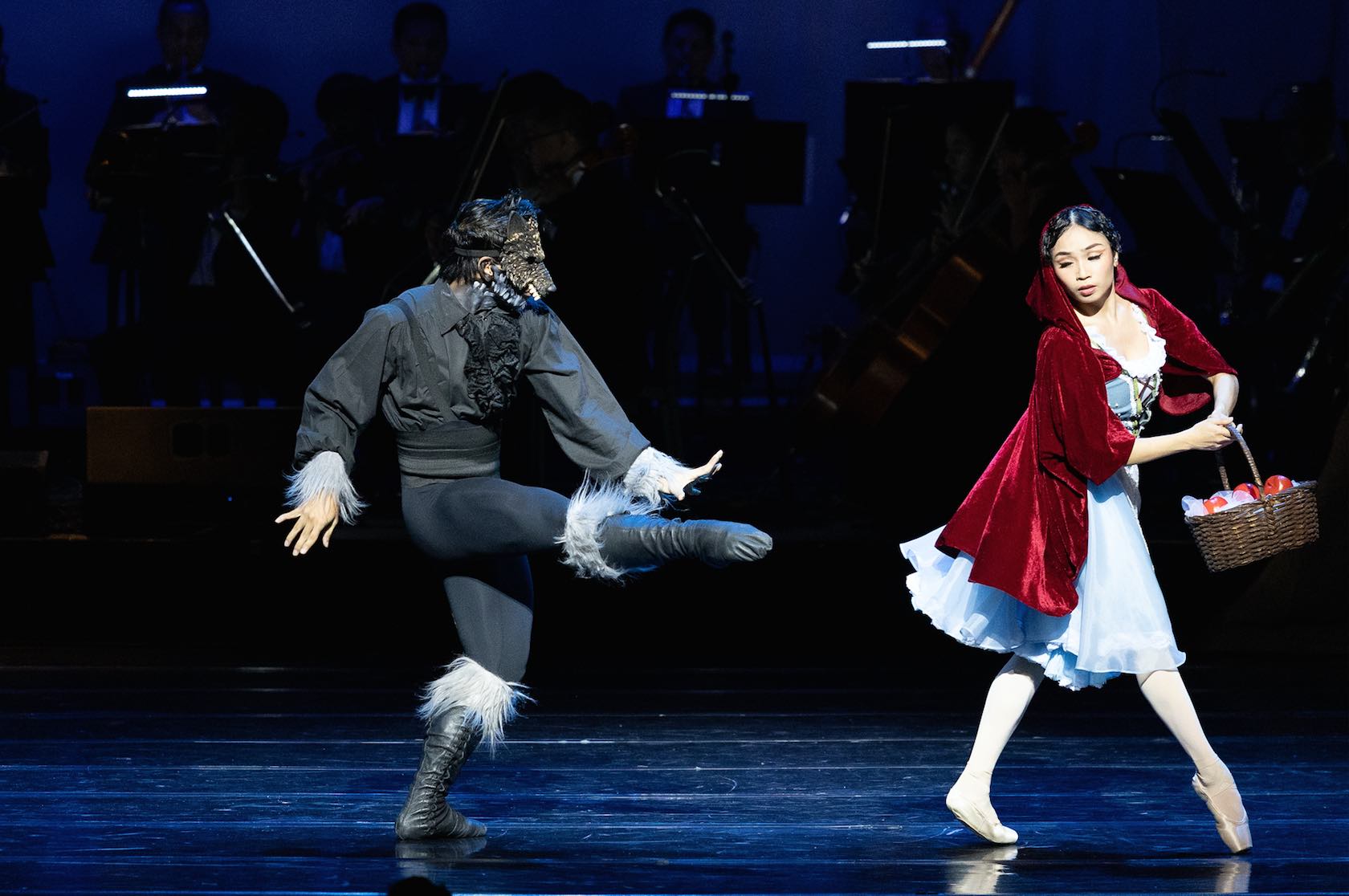REVIEW: 'Peter and the Wolf' and 'Little Red Riding Hood' shine as a double bill with nostalgia and magic worth revisiting
For the first time in the history of local performing arts, three of the country’s premier cultural institutions came together to present a twin bill of classic children's tales: Peter and the Wolf and Little Red Riding Hood. This significant collaboration among Ballet Philippines, Repertory Philippines, and Manila Symphony Orchestra only promised brilliance—and brilliance is exactly what they delivered.
Showcasing a magical blend of dance, music, and theater, the multi-master production that ran only until Aug. 3 let innocence and danger meet in an enchanted forest to fight a big wolf: the antagonist in both Russian composer Sergei Prokofiev and French author Charles Perrault’s beloved stories. While it takes off centuries-old children’s tales and features similar themes of bravery, kindness, and emotional discovery, the show makes it a point to be both of the past and of the moment: Think REP's theatrical storytelling and BP's classical choreography that hold your attention, punctuated with orchestral music performed live by MSO and conducted by Maestro Marlon Chen on the same stage.

Peter and the Wolf
The big event opens with Peter and the Wolf, which is about a little boy (Elian Santos) who forms a friendship with animals in the wilderness. His grandpa (Zack Flynn) angrily tells him not to go outside due to potential harm or danger posed by a wolf (Kirby Dunnzell) wandering in the area, which Peter eventually crosses paths with during an outdoor stroll.
Directed by Jeremy Domingo and choreographed by PJ Rebullida, REP's musical theater production moves like the wind. It runs for only 30 minutes, and much of it is told through classical music. Since it was Prokofiev’s way of introducing it to the little ones when he composed it in the 1930s, each character is represented by a symphonic instrument: the bird (Maisie Briones) by a flute, the duck (Chloe Alcid) by an oboe, the cat (Rexter Nagaño) by a clarinet, the grandfather by a bassoon, the wolf by French horns, and Peter by the strings. Like a bedtime story, there are passages told by a narrator, too. On the gala night, it was 2021 Nobel Peace Prize laureate Maria Ressa. She was followed by Maan Hontiveros, Akiko Thomson-Guevara, Liza Chan-Parpan, Karylle Tatlonghari-Yuzon, and Tim Yap in the succeeding schedules.

Peter and the Wolf has a humble costume and stage design. The “trees” are only ladders, though they are evidently stable and are able to hold the dancers quite well from start to finish. The “big wolf” is also not as scary as he is described in the story. The play of lights in the background is noticeably scarce.
The simple wardrobe and set, however, put the spotlight on the stars of the evening. Santos is adorable and spectacular as Peter. Briones as the bird also blooms at her own pace and connects with spectators through moments of laughter, like when she gets into a light argument with the duck and shivers with fear as the wolf gets near her.

But it’s Alcid’s character that keeps the show entertaining with her funny antics and sassiness. Her role as the duck is quickly pitiable when she gets swallowed by the wolf in one gulp. In the original version, that was the end of her onstage appearance. In the Three Masters, One Stage production, however, she later comes back from the afterlife and stays throughout the show wearing a halo, giving the audience the chuckles as she helps fight the wolf with the little boy and his animal friends, and rejoices with them from heaven when the creature finally gets caught.
Santos' Peter shines the most when he becomes a young hero. He uses his courage in capturing the wolf and lets kindness prevail in the end by telling the hunters not to kill it and take it to the zoo instead—just like in the original fable.
Little Red Riding Hood
Peter and the Wolf is followed by Little Red Riding Hood, a full-length classical ballet with artistic direction by Russian artist Mikhail “Misha” Martynyuk using the music of French composer Camille Saint-Saëns and Norwegian composer Edvard Grieg. It's an incredible reimagining of the timeless fairytale that follows a young girl (Jemima Reyes/Regina Magbitang) who comes across a wolf (Rudolph Capongcol/Ian Ocampo) that ends up deceiving her and her grandmother (Krystn Janicek).
Looking more vivid than the first part, the set design is complete with a wide prop selection that accentuates the story and complements the striking costumes of the characters. There's also no narration this time, which shifts the focus to the story being told through music and dance without drowning each other out.
Reyes, on the gala night, is captivating as Little Red Riding Hood. She moves radiantly, with calculated leaps and tranquil moves that complement the live music, making it look like they are one.
The strongest moment involves her and the wolf as she tries to escape from him in the forest. The choreography moves fast with multiple layers, though Reyes is able to maintain her grace without having to fight for it. The wolf, played by Capongcol on the gala night, also steps up his game with his commanding stage presence and energy that shine when he twirls, soars, and transfers from one place to another. They both take up space and echo each other’s moves, keeping the stage alive despite a few repetitive patterns.

The woodcutters along with the bumblebee, cat, birds, and grasshoppers eventually come together to catch the wolf. At this point, the stage is filled by all of them. That their moves are in sync shows there's a lot going on, but not too much that it drags on.
What the masters did exceptionally well is giving the ending a touching twist: Instead of cutting open the wolf's belly and filling it with huge stones until he falls down dead as in the childhood tale, it shows the creature as one that’s not too bad to be better. When he pleads not to get killed and vows to be good moving forward warms the heart.
This is certainly one way to revisit Peter and the Wolf and Little Red Riding Hood as an adult. The show wants us to open up our minds to see the childhood stories we loved through a different lens, and it undeniably succeeds at that. REP, BP, and MSO's historic collaboration reminds us to beware of wolves, but to also keep in mind that not all of them are beyond redemption. Most importantly, it spotlights the power of kindness and compassion—and how they could connect us all.


